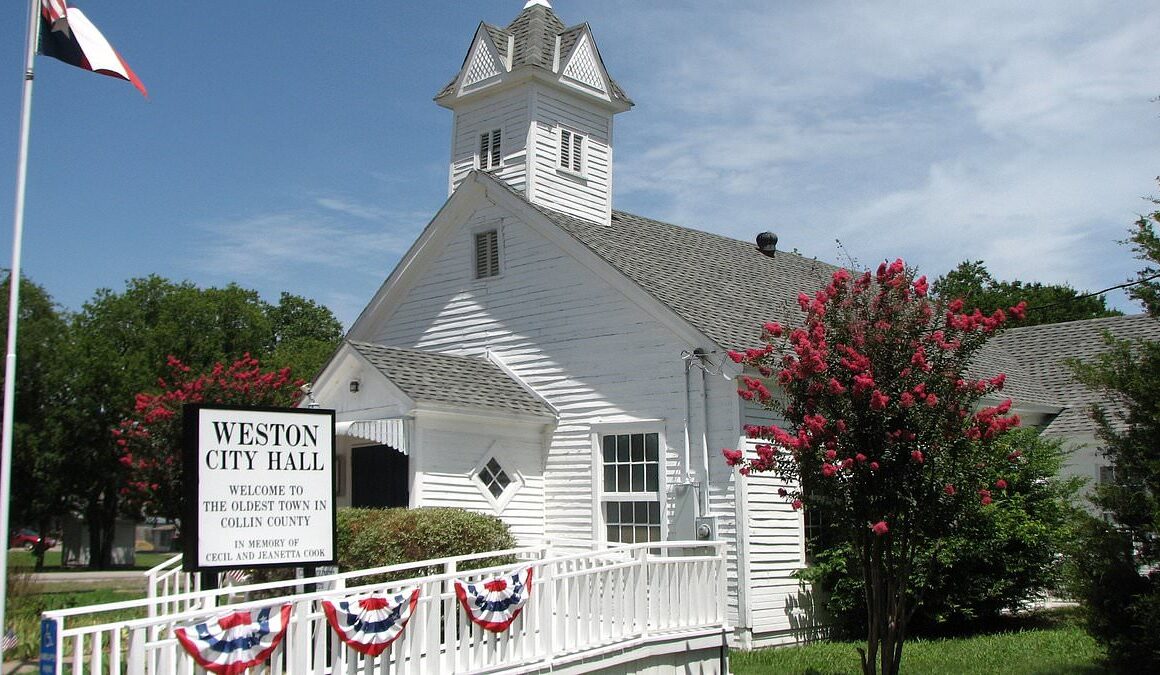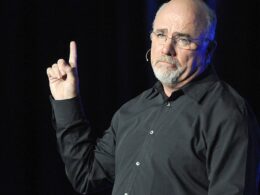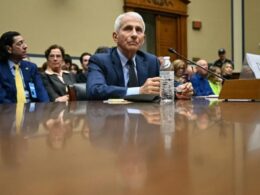As Texas continues to see Americans move down in droves to the Lone Star State, one town has seen its population spike 184 percent in the past three years.
Earlier this week, it was revealed that eight of the ten fastest growing cities in the US are in Texas.
That was punctuated by billionaire Tesla and X CEO Elon Musk announcing he was moving his companies’ headquarters from California to Texas.
One town that’s seen an interesting boom is that of Weston, which went up 184 percent from 2020, according to the Census Bureau’s estimates.
The town – which was settled in 1842 and incorporated in 1873 – remains small, at a population of just 816 people but that’s still a massive rise from the just 287 who lived in the Collin County town in 2020.

The city proudly refers to itself as ‘the oldest town in Collin County’ as it edges closer to 200 years old.
The city is about eight miles east of Celina, which may explain what’s made it a popular destination.
Celina, Texas grew 53 times faster than the rest of the nation, the US Census announced– earning it the fastest growing city title.
The city, about an hour north of Dallas, grew by 26.6%, while the national growth rate is 0.5%,
Pronounced Sa-lina by locals, Celina’s population nearly tripled in the last three years.
In 2020, it was just a rural outpost of just 17,800 people outside of Dallas, but three years later, the population ballooned to 43,300.
In fact, Celina isn’t the only Lone Star State city to make the list of fast growing, according to the US Census.
Eight of the 10 fastest-growing cities in the US are in Texas, and most are in the Dallas area, with new arrivals turning suburbs like Princeton, Anna, Prosper and Forney into boom towns.


That data tracks with projections that Texas cities are poised to overtake New York City, Los Angeles and Chicago.
By 2100, ‘everything’s bigger in Texas’ will be true of the population, with the state expected to be home to a whooping 96 million people.
Dallas will replace New York City as the largest city in the country, while Houston will overtake Los Angeles and Austin will bump Chicago.
Although part of the larger Dallas-Fort Worth area, Celina gets high marks for safety, with 9 in 10 residents rating it as excellent or good ratings for safety.
It was also ranked as 64% safer than the rest of country by Neighborhoodscout.com.
Home builders are constructing jaw-dropping McMansions for a fraction of the price if you bought a similar home in other parts of the country.
While Celina does offer its share of mini-castles, the median home price is about $340,000.
“It’s really still a great price point to get into a city in the (Dallas-Fort Worth) Metroplex,’ said realtor Tiffany Caballero in an online tour of Celina.
‘And it’s the median, then there are lots of houses under that as well.’
Celina is considered rural, the home seller explained, adding that anyone moving there would have to be mindful of that, adding that the town’s one high school is top rated.

Currently under contract and last listed at $3,795,000, this 6 bedroom, 7 bathroom home in Celina, Texas is 6800 square feet. It was built this year and features a pool, spa and five-car garage
‘Everyone supports the Bobcats and wears orange and black like it’s Friday Night Lights,’ Caballero said, referencing the movie about football culture in small-town Texas.
‘But it’s because there’s only one high school. Everybody is super community-oriented and involved.’
Celina’s population is expected to peak at 350,00, meaning more schools will definitely be built as new families moves in.
Almost every Texas city has seen incredible growth in the last few years, largely due to relatively lower cost of living compared with many other states, however, the cost of living has swelled for many natives and long-time residents who are feel priced out of their own state.
Texans also do not pay state income tax.
The job market is also incredibly healthy, as the state is ranked third in the nation in CNBC’s 2024 top states for business rankings.
This news isn’t particularly new, as it was revealed about 300 Californians moved to Texas each day in 2021 – a staggering 111,000 people, newly released data shows.
One such Californian was Elon Musk, who announced he is moving both SpaceX and X headquarters to the Lone Star State over the liberal state’s new gender identity laws on July 16.

Elon Musk announced he is moving both SpaceX and X headquarters to Texas over California’s new gender identity laws
He said Gov. Gavin Newsom‘s signing of a law that bans California school districts from notifying parents if their child is transgender was ‘the final straw.’
However, Edward Niedermeyer, author of ‘Ludicrous: The Unvarnished Story of Tesla Motors,’ believes Musk’s decision is business motivated.
‘I think Musk has made the calculation that he’s gotten all the benefits he’s likely to get out of the state and he’s moving on to the next one,’ Niedermeyer told The Los Angeles Times.
In February, Musk moved the incorporation of his space exploration company Space X to Texas from Delaware after a Delaware judge ruled the Tesla compensation package he received was deeply flawed and was ordered to pay it back.
Musk has already moved Tesla’s headquarters from Palo Alto, California to Austin after Alameda County officials would not let him re-open the plant under coronavirus restrictions – despite Newsom announcing that manufacturers could restart operations.
The billionaire himself had even moved to the Lone Star state in 2020 after living in California for two decades and has already been in the process of moving SpaceX to Texas as he spoke out against California’s liberal policies.
He has rallied against the use of preferred pronouns – often mocking the practice on social media and dismissing it as part of a ‘woke’ agenda that is dangerous for society.
Critics slammed Musk for moving his companies saying they deserve his business after taxpayers funded them and gave him benefits for years.
‘California, through tax credits, [electric vehicle] subsidies and training grants made Elon successful,’ Lorena Gonzalez Fletcher, president of the California Labor Federation, told The Times.
‘That amounts to hundreds of millions in taxpayer dollars, for him to continually spit in the face of California’s workers and taxpayers.’










